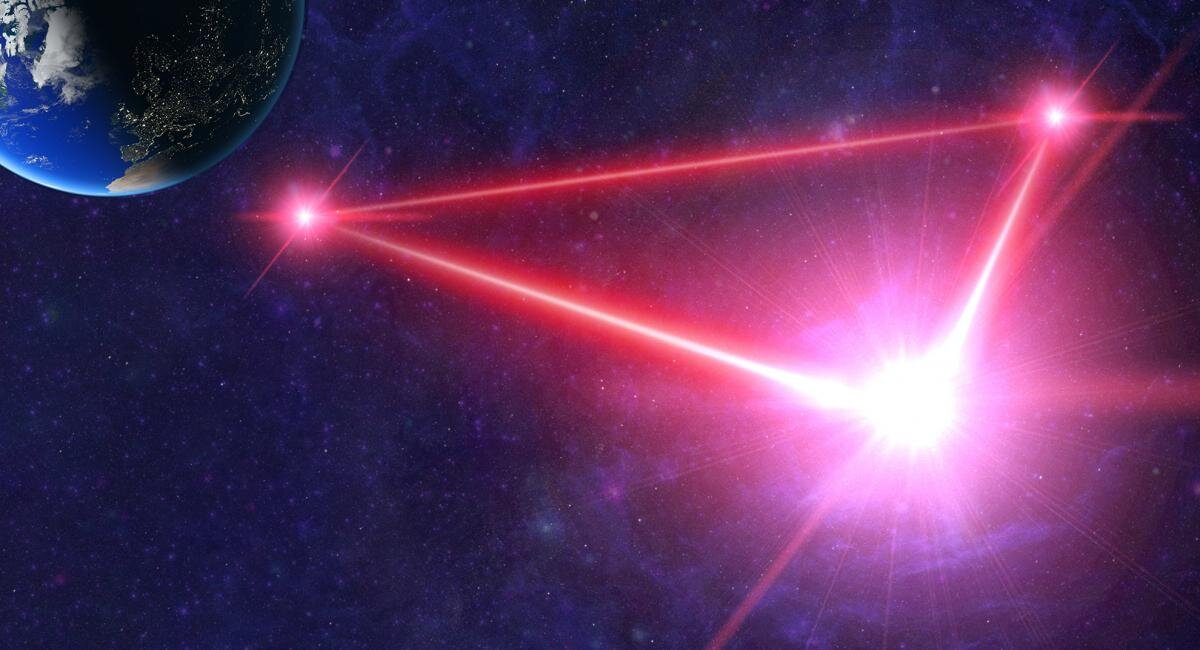We do not see most of the gravitational waves generated by the merger of black holes due to the fact that they merge into a single background. In order to isolate them from it, it is proposed to launch a giant network of interferometers into space.

How to catch gravitational waves
Scientists propose to launch giant instruments into space that will work together as a telescope the size of the Earth’s orbit. All this is done in order to see the gravitational waves from the merging of black holes that are hiding from us.
Gravitational waves from the merger of black holes and neutron stars were predicted by Einstein’s theory of relativity. But it was possible to catch them only in 2015 thanks to the giant interferometers LIGO and VIRGO. Later, KAGRA also joined them. In total, they were able to register hundreds of such events.
But every year there are hundreds of thousands of them in the Universe. That is, we were able to catch only a small part of the gravitational waves, and for the rest, the sensitivity of our instruments is still small and they merge into a single stochastic gravitational wave background (SGWB).
However, scientists still hope to isolate individual events from the SGWB and find out what happens when black holes merge. To do this, they propose to launch into space a network of 3-4 interferometers, similar to LIGO or VIRGO.
Laser interferometry in space
A laser interferometer is a type of observatory operating in a way different from other telescopes. Instead of collecting particles from the radiation source, they register the vibrations of space passing through the device. This is not based on interference phenomena — mutual amplification or attenuation of electromagnetic waves when they overlap.
In gravitational observatories, laser beams are used, which give an interference pattern despite the fact that their rays have to travel a distance of several kilometers. When it is broken, it means that a gravitational wave has passed through the device.
But even one such device for registering gravitational waves is not enough. Therefore, they work in pairs separated by thousands of kilometers. And it is this distance, which is called the base, that determines the sensitivity of the device.
Due to the increase in the base, it is planned to launch interferometers into space. Now two different projects have been proposed for the implementation of this giant gravitational observatory. One is proposed by Europeans and is called the Big Bang Observatory (BBO), and the other is Japanese with the name Deci-hertz Interferometer Gravitational-wave Observatory (DECIGO).
Which of them will be implemented is unknown, but both assume a base that will be equal to the distance between the Earth and the Sun. Scientists are confident that this will be enough to reveal all the secrets of the SGWB.
According to phys.org
Follow us on Twitter to get the most interesting space news in time
https://twitter.com/ust_magazine

